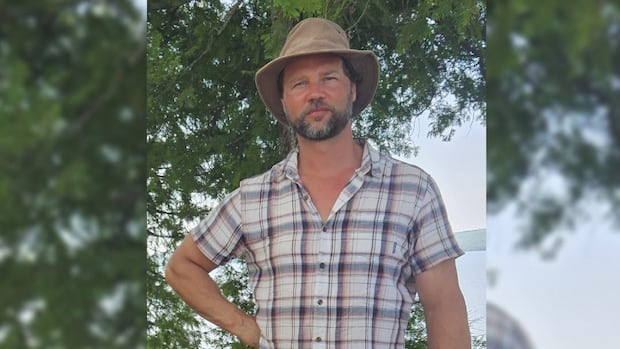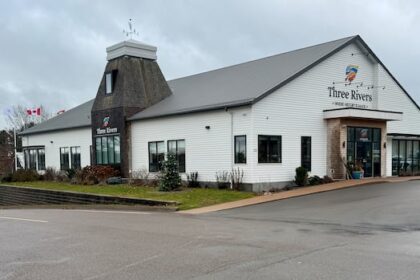New BrunswickWith more than 300 wildfires already recorded in New Brunswick this year, a researcher and an environmentalist say it’s time to rethink forestry practices that promote the cultivation of softwood trees alone, or monocultures, because they could be making our forests more vulnerable.Researcher, environmentalist say softwood monocultures, such as tree farms, increase the risk of fireAnthony Taylor, a forest ecologist at the University of New Brunswick, says research shows mixed forests are more resilient than softwood monocultures. (Submitted by Anthony Taylor )The rise in wildfires this year has some researchers and activists calling on the province to rethink how Crown land is managed.More than 300 wildfires have been recorded in New Brunswick so far this year, up from 226 in 2024.Even more striking is the amount of land that has been burned. Last year, it was about 187 hectares. This year, it’s already more than 2,506 hectares.Anthony Taylor, a professor of forest ecology at the University of New Brunswick, said practices that promote the cultivation of only softwood trees, such as spruce and pine — known as monoculture — might be making our forests more vulnerable to fires.”If you have a landscape like New Brunswick, and you are doing more spraying [of herbicides] to promote more conifers, in essence you’re creating a landscape that’s more vulnerable to fire if you had the right weather,” said Taylor. Diverse forests, with mixed conifer and hardwood species, better resist fires, according to Taylor. He explained that conifer woods are more vulnerable to fires because chemicals within them make them combust easier than other types of trees.Clearcutting and weeding are methods commonly used to eliminate undesired vegetation and species of trees around conifer tree farms to promote their growth, Taylor said.Forestry companies often clear cut around the conifers or spray herbicides to prioritize the harvesting of softwood trees, due to their value in the lumber industry, he said.According to the 2023 State of the Forest Report, released by the provincial government in an effort to provide information on how Crown forests are managed, 68 per cent of trees in the province are softwood trees, while the remaining are hardwoods.Environmental group wants more diverse forests Beverly Gingras, executive director of the Conservation Council of New Brunswick, agrees it is time for the government to diversify provincial forests in order to make them less vulnerable to fire.”With climate change we are getting less and less water, we can expect more heat, [and] we can expect those trees are going to be more flammable,” she said. Beverly Gingras, executive director of the New Brunswick Conservation Council, is calling on the province to diversify Crown forests to benefit the forestry industry and vulnerable rural communities. (Submitted by Beverly Gingras)”By creating these forests that are just conifers, we are really just creating forests that are ready and primed for fires.” In an emailed statement, a spokesperson for the Department of Natural Resources acknowledged that climate change is creating conditions that make “wildland fire suppression” challenging.However Valerie Kilfoil said it was once normal to see several thousand hectares burned in one season.”Between 1990 and 1992 [New Brunswick] saw an average of more than 5,000 hectares burned each year,” she wrote.”Since then increasingly sophisticated processes and technology have allowed provincial wildland fire responders to be extremely effective at initial response and a large number of annual fires are typically extinguished before they grow to a large size.”Kilfoil said the Crown land forest strategy in New Brunswick includes reducing “forest fuels” by thinning the forest so “crowded and dead trees” are not left standing.She said the strategy also includes “new elements to preserve species diversity,” which includes “hardwood and mixed wood forests, which burn at lower intensity.” Kilfoil did not specify what those new elements are.Gingras points to forest management practices like selection harvesting, which promotes forest diversity by keeping some hardwoods. She said it not only helps to protect plantations of softwood, but also protects nearby communities. “I think it behooves the government forest industry to really think about how to do forest management practise to adapt to climate change,” she said.”[To] think about how to make these communities and forests more resilient to climate change and forest fires.”Gingras added that the Conservation Council has been meeting with officials with the Department of Natural Resources and providing suggestions on how to diversify the Acadian forest, and to push the government to increase its conservation areas. The State of the Forest report shows that half of New Brunswick forests are Crown land, and the other half is privately owned. On Crown land, 18.2 per cent is protected land, 3.3 per cent is conserved land, and 8.5 per cent is set aside as watercourse and wetland buffers.Hot and dry summer shows immediate change neededGringas said it’s time to stop focusing only on softwood forests because conifers are “not resilient to climate change.”She believes the government should create regulations to further protect the forests from practices that promote monocultures, thereby reducing wildfire risks. “Forest companies are there to make money,” she said. “They are making money off creating these conifer monocultures.””So the government will need to try to encourage forest companies to think outside of that and think about building more resilient forests that are going to be there for all of us in the future.”Kilfoil said the province is planning to release a new State of the Forest report later this fall.Taylor said the hot and dry conditions this summer should change the way New Brunswick manages its Crown land and that re-evaluating forestry practices to stop wildfires from spreading is becoming a necessity. “With the amount of climate change that’s expected now, the amount of weather that is conducive to fire, it’s going to increase for sure, primarily because of the warming,” said Taylor.”Because of that, then we should be re-evaluating some of our forest management practices, like spraying and thinning, that promote conifers because those are the more flammable species.”ABOUT THE AUTHORKatherine Del Salto is a reporter at CBC New Brunswick in Fredericton. You can reach her at katherine.del.salto@cbc.ca.
Increase in wildfires shows forestry practices need to change, experts say











